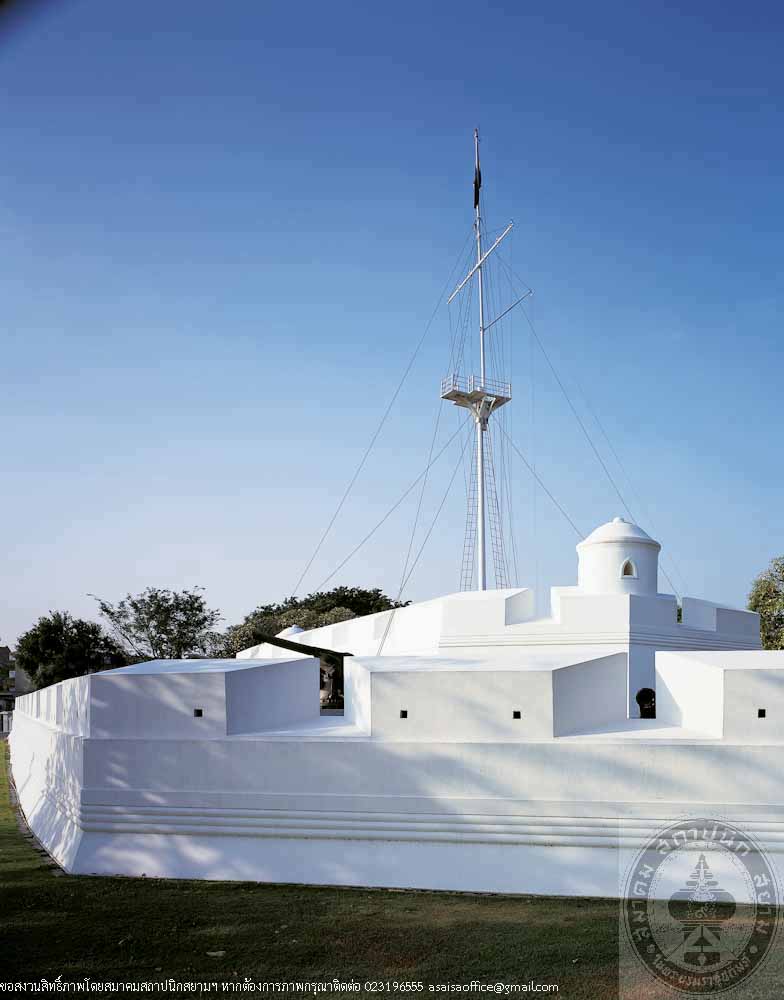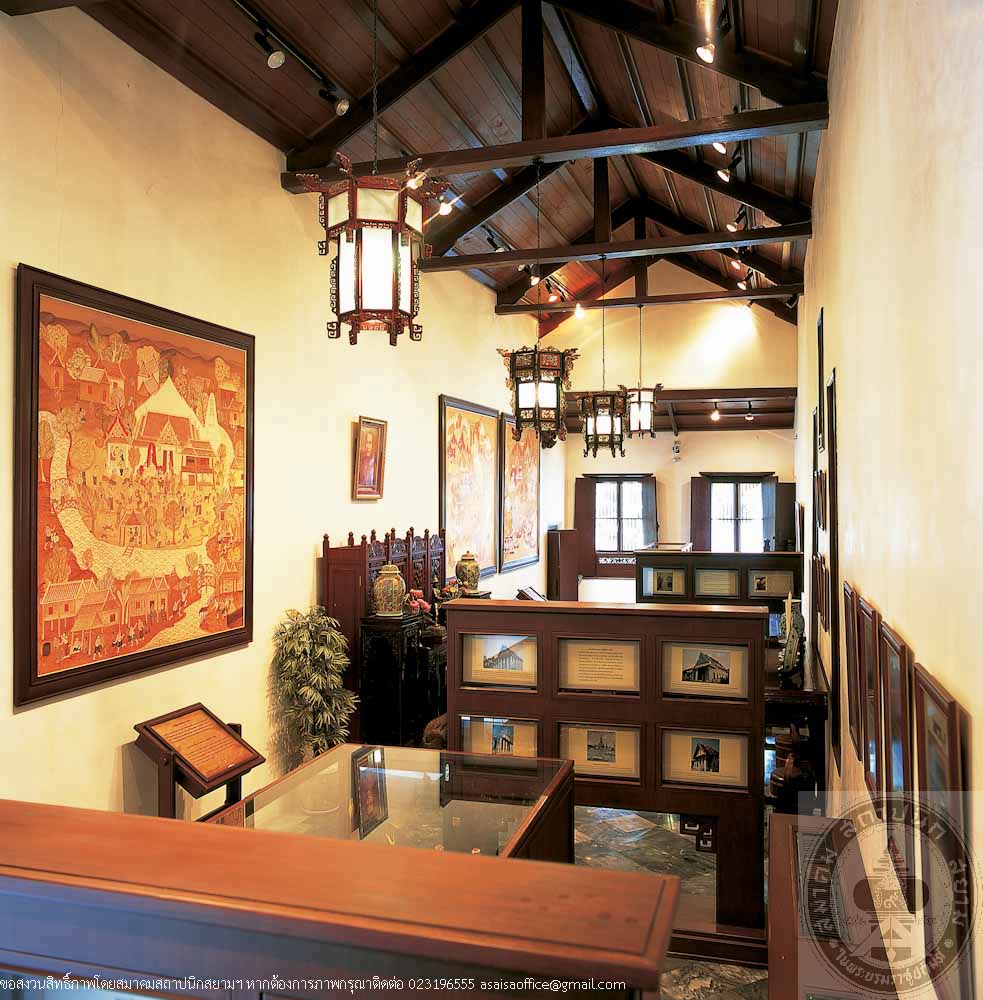พระราชวังเดิม กรุงธนบุรี
พระราชวังเดิม กรุงธนบุรี (กองบัญชาการกองทัพเรือ)
ที่ตั้ง ถนนอรุณอมรินทร์ ปากคลองบางกอกใหญ่ กรุงเทพมหานคร
สถาปนิก/ผู้ออกแบบ -
ผู้ครอบครอง กองทัพเรือ
ปีที่สร้าง พ.ศ. 2311
ปีที่ได้รับรางวัล พ.ศ. 2537
ประวัติ
พระราชวังเดิม กรุงธนบุรี คือ พระราชวังหลวงซึ่งสมเด็จพระเจ้าตากสินมหาราชโปรดเกล้าฯ ให้สร้างขึ้นเมื่อพ.ศ. 2311 เมื่อคราวทรงสถาปนาราชธานีแห่งใหม่ ณ กรุงธนบุรี หลังจากทรงกอบกู้บ้านเมืองเป็นผลสำเร็จเมื่อพ.ศ. 2310 โดยใช้พื้นที่ในบริเวณกำแพงป้อมวิไชเยนทร์ทางฝั่งตะวันตกของแม่น้ำเจ้าพระยาเป็นที่ตั้ง ขยายเขตพระราชวังด้านเหนือออกไปจรดคลองนครบาล ทำให้วัดอรุณราชวรารามกลายเป็นพระอารามหลวงประจำพระราชวัง เขตพระราชวังด้านตะวันตกจรดวัดโมลีโลกยาราม (วัดท้ายตลาด)
การสร้างพระราชวังในภาวะที่ต้องทำศึกสงครามอยู่ตลอดเวลา 15 ปีแห่งรัชสมัย ทำให้พระราชวังกรุงธนบุรีมิได้มีพระราชมณเฑียรสถานที่สง่างามเพียบพร้อม อาทิ ไม่มีปราสาท อย่างไรก็ได้ นับได้ว่าการก่อสร้างทำด้วยฝีมือช่างที่วิจิตรบรรจงและมีอาคารสถานที่ที่เหมาะสมแก่ความเป็นพระราชวังอยู่ครบถ้วน ได้แก่ พระวิมาน ท้องพระโรงคลังสรรพาวุธ โรงช้าง โรงม้า โรงพระโอสถ โรงตระลาการสำหรับพิพากษาคดีความ พระคลังหลวง ไปจนศาลอำมาตย์และทิมที่พักข้าราชการ
ต่อมาในสมัยรัตนโกสินทร์ พระราชวังเดิมก็ได้เป็นที่ประทับของเจ้านายหลายพระองค์ในหลายยุคหลายสมัยซึ่งสมเด็จพระเจ้าบรมวงศ์เธอ เจ้าฟ้าจาตุรนต์รัศมี กรมพระจักรพรรดิพงศ์ เป็นเจ้านายที่ทรงประทับที่พระราชวังนี้เป็นพระองค์สุดท้าย หลังจากที่พระองค์สิ้นพระชนม์แล้ว พระบาทสมเด็จพระจุลจอมเกล้าเจ้าอยู่หัวทรงโปรดเกล้าฯพระราชทานพระราชวังเดิมให้เป็นที่จัดตั้งโรงเรียนนายเรือ และได้เป็นที่ตั้งกองทัพเรือมาจนทุกวันนี้
สถานที่สำคัญในพระราชวังเดิมที่ยังปรากฏในปัจจุบัน ได้แก่ ท้องพระโรง ซึ่งเป็นท้องพระโรงเดิมแต่ครั้ง กรุงธนบุรี พระตำหนักเก๋งคู่ ลักษณะสถาปัตยกรรมจีน พระตำหนักเก๋งพระบาทสมเด็จพระปิ่นเกล้าเจ้าอยู่หัว และป้อมวิไชยประสิทธิ์ซึ่งคือป้อมวิไชเยนทร์เดิม โบราณสถานเหล่านี้ได้รับการบูรณะปรับปรุงและดูแลเป็นอย่างดี และยังคงใช้งานอยู่จนถึงปัจจุบัน โดยปรับการใช้สอยอาคารบางหลังเพื่อจัดแสดงนิทรรศการ ได้แก่ พระตำหนักเก๋งคู่เล็กและพระตำหนักเก๋งคู่หลังใหญ่ จัดนิทรรศการเทิดพระเกียรติสมเด็จพระเจ้าตากสินมหาราช ส่วนพระตำหนักเก๋งพระบาทสมเด็จพระปิ่นเกล้าเจ้าอยู่หัว ชั้นบนเป็นที่จัดแสดงพระราชประวัติพระบาทสมเด็จพระปิ่นเกล้าเจ้าอยู่หัวและห้องสมุด ชั้นล่างจัดแสดงเงินตราและเครื่องถ้วยโบราณของไทย

พระราชวังเดิม กรุงธนบุรี

พระราชวังเดิม กรุงธนบุรี

พระราชวังเดิม กรุงธนบุรี

พระราชวังเดิม กรุงธนบุรี

พระราชวังเดิม กรุงธนบุรี

พระราชวังเดิม กรุงธนบุรี
-

พระราชวังเดิม กรุงธนบุรี
-

พระราชวังเดิม กรุงธนบุรี
-

พระราชวังเดิม กรุงธนบุรี
-

พระราชวังเดิม กรุงธนบุรี
-

พระราชวังเดิม กรุงธนบุรี
-

พระราชวังเดิม กรุงธนบุรี
Phra Ratchawang Doem Krung Thonburi (Royal Thai Navy Headquarters)
Location Arun Amarin Road, by the mouth of Bang Kok Yai, Bangkok
Architect/Designer Unknown
Proprietor Royal Thai Navy
Date of Construction 1768 AD.
Conservation Awarded 1994 AD.
History
Phra Ratchawang Doem Krung Thonburi (the Old Palace of Thonburi) was the royal palace of King Taksin the Great who established the capital of Thonburi and the palace in 1786 AD., one year after he conquered the Burmese and declare independence of Siam in 1767. The locationof the palace was the site of Wichaiyent Fort on the bank of Chao Phraya river. Thearea was extended to Nakhonban canal in the north and to Wat Molilokayaram in the west. Adjcent to the palace, Wat Arun Ratchawararam (Temple of Dawn) was designated as a royal temple.
During 15 years of his reign, King Tamsin the Great has several wars to wage thus there was not much peaceful time for elaborating the palace. Nevertheless, the palacae comprises all buildings with fine architecture and craftsmanship as proper for a royal residence including Phra Wiman (the King’s private quarter), Throne Hall, arsenal, elephant stable, horse stable, house of medicine, house of justice, treasury, officials gathering hall, and official houses.
Later in Rattanakosin period, the palace became a residence of members of royal family comsecutively. The last resident was Prince Chaturonratsami Krommaphra Charkraphaddiphong. After he passed away, King Rama V had the Naval Academy established at the palace. Since then, the Royal Thai Navy has continually maintained and restored this historic place and used as their headquarters until today.
Singificant ancient buildings of Phra Ratchawang Doem which have been conserved are the Throne Hall of Thonburi period, Phra Tamnak Keng Jhu (Twin Chinese Paviliions) with Chinese architectural style, King Pinklao Pavillion, and Wichaiprasit Fort (original Wichaiyent Fort). Some of these buildings have been rehabilitated, for instance, Phra Tamnak Keng Khu are used for exhibitions on life and deeds of King Taksin the Great. At King Pinklao Paviliion, on the second floor, are exhibitions on King Pinklao, and library, and the ground floor exhibits ancient currencies and potteries of Thailand.